|
Warbler-DX This Warbler-DX is for Mathias Boberg from Finland. Happy building it with your 11 yr-old daughter. I hope she enjoys the Warbler-DX.
The plots in Fig 1 are the raw responses of the Peerless 830656 and the DX25TG59-04. It shows the relative loudness of the two drivers. Please note that the DX25 tweeter is flush mounted, otherwise she won’t look so flat. Bearing in mind that the Warbler-DX will probably be used in a bedroom, I tuned the midrange (Fig 2) for a couple of dBs above the bass. The room gain from a bedroom will make the bass stronger. If I had tuned it for 4 pi, the bass will be overwhelming.
The Red plot in Fig 3 is the Peerless DX25TG59-04 crossing over to the 830656 at about 2.8kHz. At this frequency, I didn’t have to use a conjugate network to flatten the tweeter’s resonance peak. That simplified the crossover and saved some cost.
Fig 4 is the summation of the 830656 and the DX25. It looks good. No cancellations are seen in the passband. The 830656 cone breakup peak at 5kHz does not interfere with the treble even though the crossover frequency is at 2.8kHz.
Fig 5 is the final response of the Warbla-DX. There is a slight emphasis at 2kHz. On playback, this will add some presence in the vocals. Astonishingly, the DX25TG59 extends all the way to 20kHz. This is an incredible performance for a $20 tweeter. I would even give her a Best Buy stamp.
Once in a while, the drivers are made for each other. The beautiful null in Fig 6 is the result when I flipped the tweeter wires around. Mind you, this is my first attempt at the crossover. I didn’t have to fight the drivers t get them to align properly.
For a nearfield response (Fig 7), I placed the microphone close to the woofer, about 1/4″ away from the surface of the cone. At such a close distance, room reflections won’t have a chance to be picked up by the microphone. The deep notch at 150Hz is not in the nearfield measurement. The confirms that the notch is a measurement anomaly, a floor bounce in my setup.
The Brown plot in Fig 8 is the back port output. The microphone is inserted about 1/4″ into the mouth of the port for this measurement. The pipe resonance at 1kHz is about -30dB below the fundamental. This is low enough to avoid contaminating the midrange.
For a $16 woofer, the 830656 step response is quite impressive (Fig 9). Her attack is fast. At 90%, she’s at 200 microsec.
The Warbler-DX Waterfall plot in Fig 10 shows minimal artifacts in the treble. Some extended decays are recorded at 1kHz to 2kHz.
The Toneburst plot in Fig 11 shows excess energy from 1.5kHz to 2kHz. They last for about 5 cycles.
The Spectrogram (Fig 12) shows a streak at 1kHz and a few others from 1.2kHz to 2.5kHz. These are the ones seen in the Toneburst plot. Fortunately, all of them dissipated by 6 msec. Note there’s nothing above 3kHz. That’s how good a $20 tweeter is nowadays.
It is not my preference to use woofers with Qts of 0.61. I generally like Qts to be about 0.32 to 0.4 max. However with the 830656, having it in a sealed box will result in limited bass. That would mean I’ll have to apply eq electronically which is not my aim. The best box tuning I’ve come up with is in Fig 13. The +2dB bump at 100Hz does not make the Warbler-DX boomy. As a matter of fact, her bass is tight and clear. Not as loud and deep but is perfectly fine. In a smaller room, the bass will be amplified.
Fig 14 is the impedance of the Warbler-DX. She’s an easy load for power amplifiers. Her Re is only 6.49Ω. With an Re of this figure, her nominal impedance would be 8Ω. As can be seen in the saddle on the left, the Warbler-DX is tuned to slightly above 50Hz. This is very close to her box simulation in Fig 13. Warbler-DX vs KookaburraThe Peerless 830656 puts the Morel CAW634 to shame. At only $16, she blew away the Morel that cost $154. There’s no point with cast frames, high flux double ferrite magnets and all the other fancy terms when the product is totally out of specs. In the end, the Warbler-DX that cost a grand total of $36 ($16 for the 830656 and $20 for the DX25TG59-04) is a better deal that the Kookaburra that cost $232 ($154 for the CAW634 and $78 for the CAT378). The dismal performance has nothing to do with the CAT378. The culprit is the CAW634. The moral of my story is not to simply buy on brand and specs. MusingsBefore I forget, the Warbler-DX would be fabulous in a 2.5. For a mere $16 more, I can get a bass that is right at home in a 4 pi environment. Another project that comes to mind is to use the Warbler-DX as satellites in a 2.1 system. I think a compact 7 liters sealed box will work fine. For the bass, an active crossover at 125Hz to 250Hz is the cheapest approach. Crossover components at those frequencies are costly. An alternative is to simply use an active subwoofer. They usually come with an adjustable crossover and a power amplifier on board. Unless otherwise stated, all measurements were made in Full Space (4 pi) with the mic at 36 ins, tweeter axis. Impulse Window=5ms. No smoothing applied. |

April 11, 2021Projects
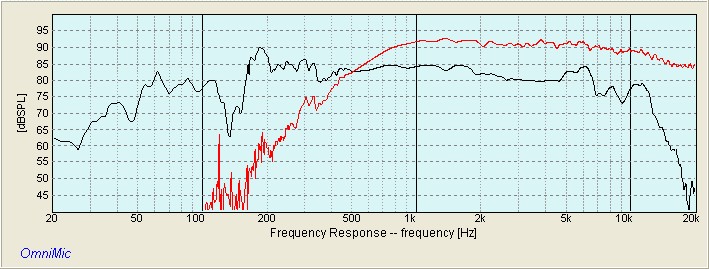 Fig 1 – Peerless 830656 and DX25TG59-04 RAW Frequency Response • Baffle Width=8-1/2″
Fig 1 – Peerless 830656 and DX25TG59-04 RAW Frequency Response • Baffle Width=8-1/2″
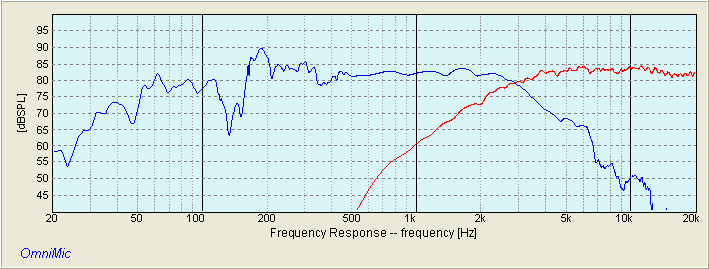 Fig 3 – Peerless 830656
Fig 3 – Peerless 830656 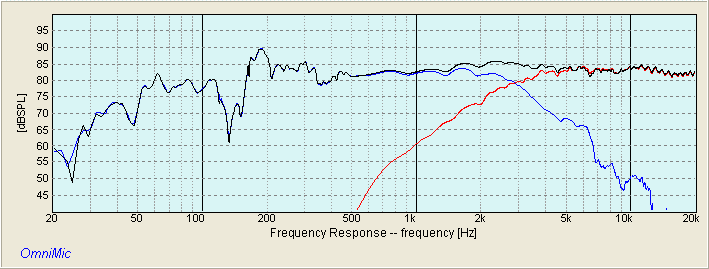 Fig 4 – Warbler-DX Passband
Fig 4 – Warbler-DX Passband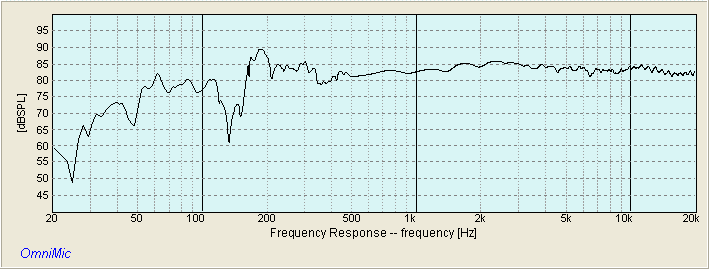 Fig 5 – Warbler-DX Frequency Response
Fig 5 – Warbler-DX Frequency Response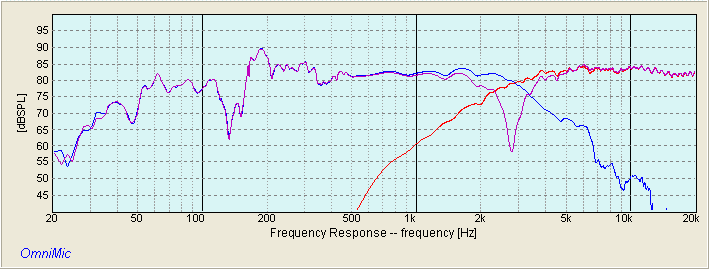 Fig 6 – Warbler-DX Null
Fig 6 – Warbler-DX Null Fig 7 – Warbler-DX Nearfield
Fig 7 – Warbler-DX Nearfield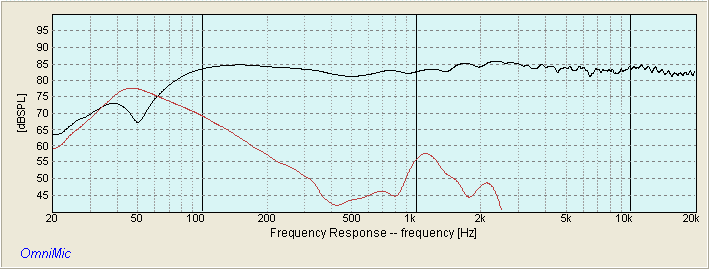 Fig 8 – Warbler-DX Port
Fig 8 – Warbler-DX Port Fig 9 – Warbler-DX Step Response
Fig 9 – Warbler-DX Step Response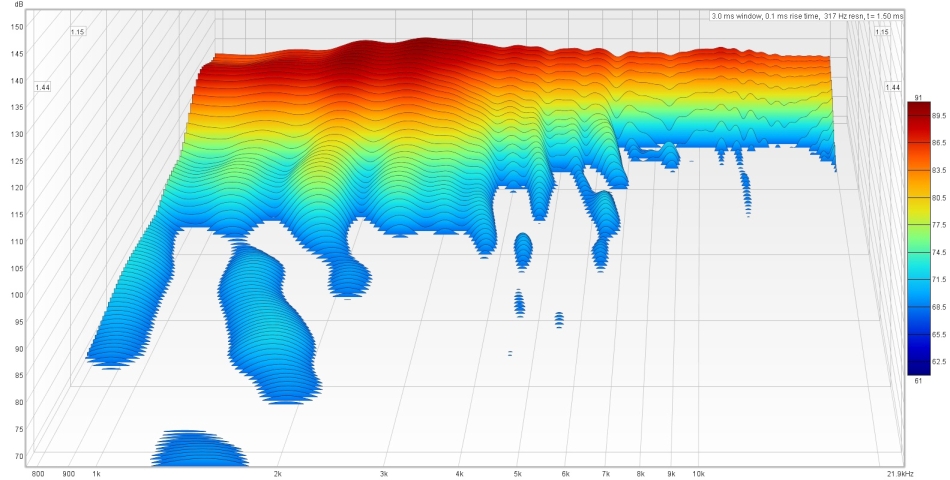 Fig 10 – Warbler-DX Waterfall
Fig 10 – Warbler-DX Waterfall Fig 11 – Warbler-DX Toneburst Energy Storage
Fig 11 – Warbler-DX Toneburst Energy Storage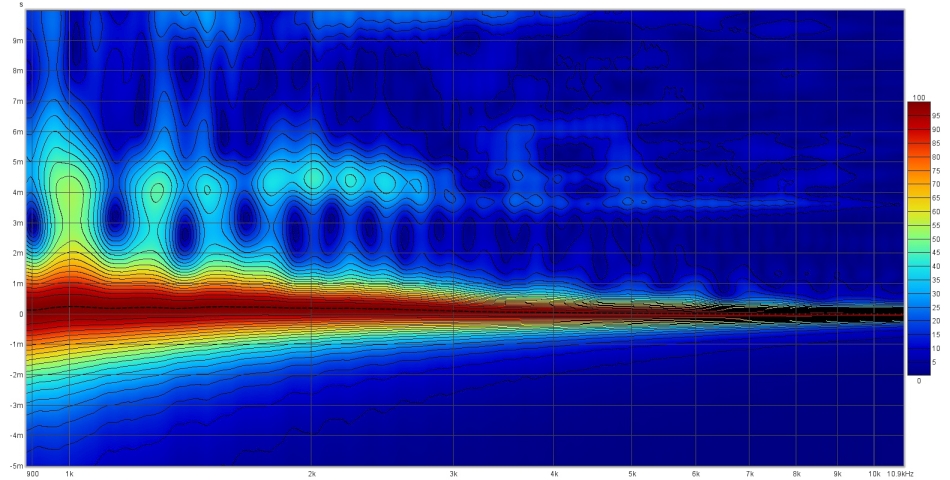 Fig 12 – Warbler-DX Spectrogram
Fig 12 – Warbler-DX Spectrogram Fig 13 – Warbler-DX Box Modeling
Fig 13 – Warbler-DX Box Modeling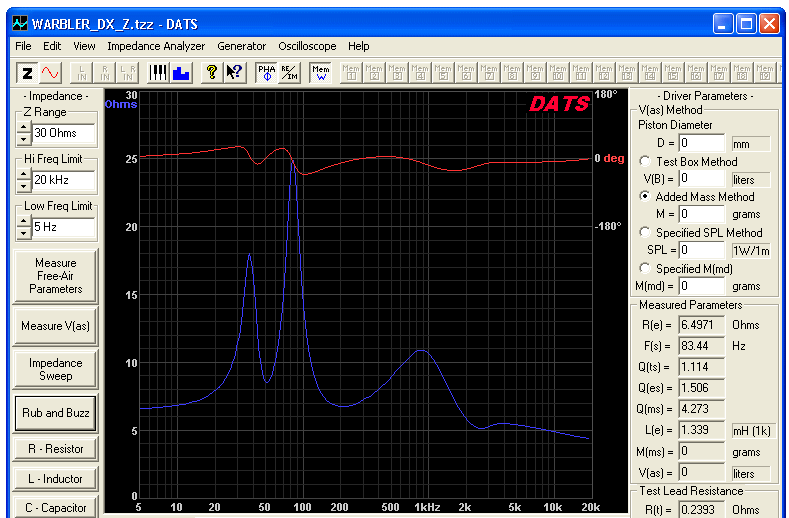 Fig 14 – Warbler-DX Impedance
Fig 14 – Warbler-DX Impedance